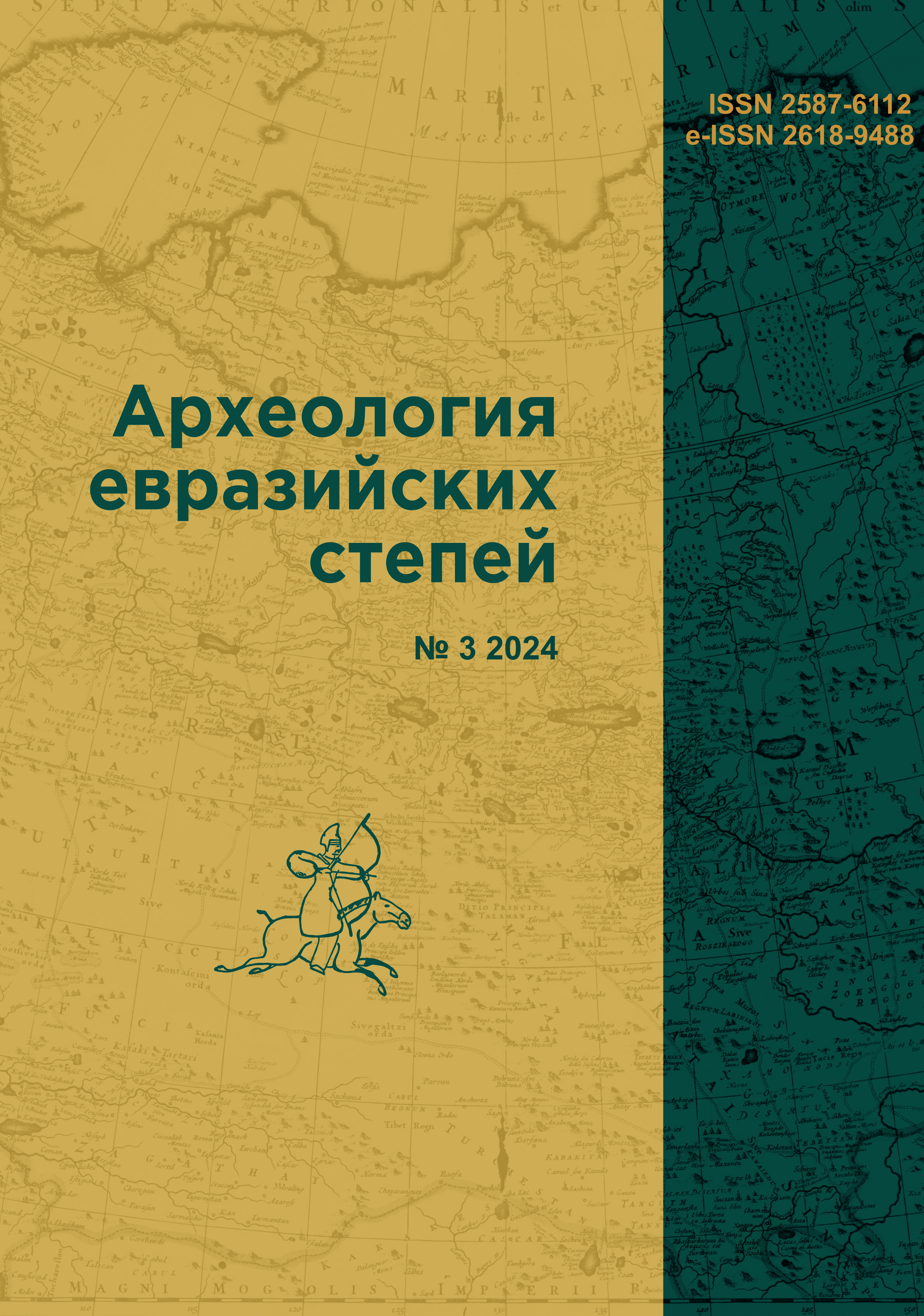Features of the Term "Boktag" Semantic Component
DOI:
https://doi.org/10.24852/2587-6112.2024.3.159.161Keywords:
archaeology, historical source, translation, semantics, boktag, bokka, gu-gu, hat, headdressAbstract
The article deals with the result of the analysis of various lexical names of "boktag" according to various sources. Having studied a number of modern publications, the author has identified more than ten names of this headdress. The author tried to understand the roots of the issue of discordance in the description of boktag by different authors. Comparing the interpretation of the term, the author has identified several references to Mongolian and Chinese sources: shinbone and doing hair (as part of the wedding ritual), combing (hair setting), putting on a "widow's hat" (a certain action and a specific headdress). After analyzing the semantics and etymology of the word "boktag" in dictionaries and documents, the author came to the conclusion that it could be borrowed into the Mongolian language. Subsequently, this word was re-translated into the Turkic and Chagatai languages. And all the early mentioned differs are guttural occlusion.
References
Galdanova, G. R. 1992. In Gerasimova, K. M. (ed.). Traditsionnaya obryadnost' mongol'skikh narodov (The traditional rites of the Mongolic peoples). Novosibirsk: “Nauka” Publ., 71–89 (in Russian).
Gomboev, G. 1860. Primechaniya na pis'mo N.I. Il'minskogo k P.S. Savel'evu lamy Galsana Gomboeva: Opisanie obychaev i obryadov u mongolov i kalmykov (Notes of Lama Galsan Gomboyev on the letter by N.I. Ilminsky to P.S. Savelyev: Description of customs and rites among the Mongols and Kalmyks). Saint Petersburg: Typography of the Imperial Academy of Sciences (in Russian).
Kozin, S. A. 1941. Sokrovennoe skazanie. Mongol'skaia khronika 1240 g. T. I. Vvedenie v izuchenie pamiatnika, perevod, teksty, glossarii (Arcane Narrrative. Mongolian Chronicle of 1240. Introduction to the Study of the Monument, Translation, Texts, and Glossaries) I. Series: Trudy Instituta vostokovedeniya Akademii nauk SSSR (Proceedings of the Institute of Oriental Studies of the USSR Academy of Sciences) 34. Moscow; Leningrad: USSR Academy of Sciences (in Russian).
Maklasova, L. E.2019. In Arkheologiia Evraziiskikh stepei (Archaeology of Eurasian Steppes) 1, 129–132 (in Russian).
Men-da bei-lu. 1975. Polnoe opisanie mongolo-tatar (Complete Description of the Mongol-Tatars). Moscow: “Nauka” Publ. (in Russian).
Poppe, N. N. 1938. Mongol'skiy slovar' Mukaddimat al-Adab (Mongolian dictionary of Muqaddimat al-Adab) Part 1–2. Moscow; Leningrad: USSR Academy of Sciences (in Russian).
Chzhiyun, Khe. 2010. In Gumanitarnye issledovaniia v Vostochnoi Sibiri i na Dalnem Vostoke (Humanitarian Studies in Eastern Siberia and the Far East) (4), 138–141 (in Russian).
Mostaert, A. 1950. In HJAS. 13 (3/4), 285–361 (in French).
Nugteren, H., Wilkens, J. 2019. In IJOUS. 1 (2), 153–170.

Downloads
Published
How to Cite
Issue
Section
License
Copyright (c) 2024 L.E. Maklasova

This work is licensed under a Creative Commons Attribution-NonCommercial 4.0 International License.







